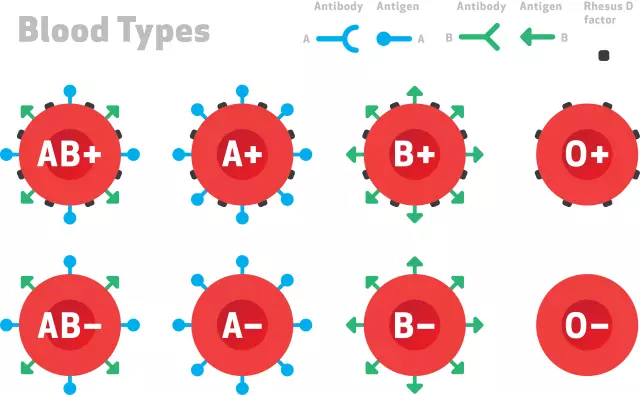- Author Curtis Blomfield [email protected].
- Public 2023-12-16 20:44.
- Last modified 2025-01-23 17:01.
The share of follicles in both the right and left ovaries plays a very important role. Thanks to them, every woman gets the opportunity to experience the happiness of motherhood. However, this is possible only if their quantity corresponds to the required norm, and also if they ripen and acquire the appropriate quality. Otherwise, a deviation from the required parameters may be fraught with the development of various pathological conditions or end in a state of infertility. Today's topic is devoted to the situation when there are many follicles in the ovary, as well as the possible consequences of this condition.
The role and importance of follicles

Follicles should be understood as some sacs that contain immature eggs. Each female representative is endowed from birth with her own supply of eggs, which begins to be laid as early as the 6th week of embryonic development. The formation of these sacs ceases from the moment the factbirth. Their total number can reach 500 or more thousand, but during the reproductive age, only 300 to 500 follicles reach an absolutely mature state. The rest of them die.
In the medical literature, there are such types of follicles as:
- dominant;
- persistent;
- antral.
In the first case, we are talking about the main follicle, which, reaching maturity, breaks into the ovulatory phase. As a rule, only one dominant follicle can be observed in each cycle. In some cases, simultaneous maturation of dominant follicles in both ovaries occurs. In this situation, they talk about the possibility of conceiving twins.
In the case of a persistent follicle, experts mean a situation where the capsule of the sac does not break and the egg cell dies. In this case, fertilization is impossible.
Antral follicles mean all those follicles that grow at the beginning of each menstrual cycle and one of them subsequently becomes dominant.
Before answering the question of what it means - a lot of follicles in the ovary, you should consider what are the functions of these sacs, which contain immature eggs.
Follicle functions

The key function of the follicles, whether right or left ovary, is to protect the eggs from the harmful effects of a number of factors.
Exactly howfollicles perform the function assigned to them, protection, adequate maturation, fertilization and the further course of pregnancy depend. In addition to their protective function, the follicles provide the production of female hormones, medically referred to as estrogens.
Set norm for the number of follicles

Before asserting that there are many follicles in the ovary, one should understand what is their normal or adequate quantitative value that takes place in a he althy state of the female reproductive system.
The calculation of the required number of follicles is carried out taking into account the day of the menstrual cycle.
For example, after 2-3 days after the end of menstrual bleeding, the question of why there are many follicles in the ovary becomes irrelevant, since such a condition is considered adequate for this period.
By the middle of the indicated cycle, one or a pair of these pouches become larger than the rest. And by the end, there is only one, the so-called dominant follicle. It is from it that the mature and ready for fertilization egg comes out. The condition in which a new menstrual cycle has begun indicates that the rupture of the follicle has occurred.
In some cases, a woman has a lot of follicles in the ovary on the 14th day of the cycle. In this situation, they are all small in size, i.e. there is no maturation and the release of an egg ready for fertilization.
Temporary factors leading to a large numberfollicles
Before reasoning will be given on why many follicles mature in the ovary with a pathology variant, it is necessary to understand what temporary factors can provoke such a condition, which is not a sign of any disorder in the body.
So, the multiplicity of follicles in the ovaries can also be a variant of the norm. In some cases, this can be caused by a stressful state that has been transferred or tolerated, prolonged mental stress, as well as emotional overstrain. Under such conditions, the number of so-called sacs returns to normal after the next ovulatory phase.
However, the following reasons can lead to a condition in which there are many follicles in the ovary:
- Using the wrong oral contraceptive;
- thyroid disorder;
- the process of puberty;
- hereditary predisposition;
- high prolactin, including lactation;
- abrupt loss or weight gain;
- violation of metabolic processes.
Pathological factors

So, to say that there are a lot of follicles in the ovary and it can be considered a pathological process if there are more than 10 sacs in each appendage. And you can attribute this to a pathology variant if the patient has:
- this state persists for a long time;
- no ovulation or it occursquite rare;
- disrupted thyroid or pituitary;
- there are sharp fluctuations in weight up or down;
- disturbances observed during the menstrual cycle;
- no conception occurs within 6-12 months with regular intercourse without the use of contraceptives and subject to the reproductive he alth of the partner.
When, under the above conditions, a large number of vesicles with eggs are observed in the ovaries, experts speak of multifollicularity. It is not always correct to consider such a condition harmless, since it may indicate the development of polycystic ovary syndrome. Thus, to explain what it means - a lot of follicles in the ovary, can be the diagnosis indicated above. The latter develops against the background of hormonal disorders and other clinical signs, including the manifestation of acne, an irregular menstrual cycle or the complete absence of menstruation, obesity, etc. Since ovulation does not occur with such a pathology or happens extremely rarely, patients are diagnosed with the term “infertility” in medicine. A number of diagnostic studies allow confirming the indicated diagnosis.
Clinical research methods

In order to assess the number and size of follicles, as well as to monitor their development, a transvaginal ultrasound is performed. This method is called folliculometry. During the first half of the menstrual cycle, the condition of the eggs is assessed andendometrium, and already in the second half, the specialist monitors the development of follicles in the ovaries after ovulation has passed.
This diagnostic method is used in the examination of patients suffering from various kinds of menstrual disorders or infertility. It allows you to accurately calculate the date of ovulation, as well as determine the most likely day of conception, monitor multiple pregnancies, identify the cause of existing disorders and monitor the course of treatment.
In addition to folliculometry, diagnostic methods such as a blood test to assess hormone levels, as well as ultrasound of the pelvic organs are also used. If there are medical indications, a puncture of the fluid contained in the follicles is performed.
If there are many follicles in the ovary, how to get pregnant?
At first glance, this situation seems to be more profitable, since with a greater number of egg sacs in the ovary, the chances of conceiving a child increase in direct proportion.
If there are many follicles in the ovary, is it possible to get pregnant? In practice, things work out a little differently. In this state of affairs, ovulation may simply not take place, and the existing follicles will turn out to be inferior, since a mature egg does not come out of them, and therefore fertilization is impossible.
However, it is possible to combine conditions such as multifollicular ovaries and pregnancy, but only when ovulation does occur in the menstrual cycle. So, if a woman has no menstruation for three consecutive months, then this is one of thesymptoms of polycystic ovaries. In this case, you can not do without a visit to the gynecologist and appropriate treatment.
Many follicles and IVF

It is quite normal for a woman to have many ovarian follicles during IVF. More egg sacs of the required quality are needed to increase the success rate of this fertilization method. To do this, experts resort to the help of stimulant drugs.
Required number of follicles for successful IVF conception

In fact, stimulating the development of the ovaries is not that difficult. However, in some cases, the ovaries do not respond to such manipulations as expected at the initial stage. However, it is possible to predict the reaction of the ovaries with a high degree of probability, knowing the number of antral follicles.
However, the minimum number of these pouches required for successful IVF depends on factors such as their size, the age of the patient, and the results of previous attempts. As practice shows, the chances of getting pregnant through IVF are small if the number of mature follicles is less than 3.
In conclusion, it should be added that every woman should pay attention to her own reproductive he alth and not neglect preventive examinations at the gynecologist. Only in this case will it be possible to identify any disorders, including polycystic ovary syndrome, if any, andstart treatment on time. Only under these conditions can everyone experience the happiness of motherhood.






